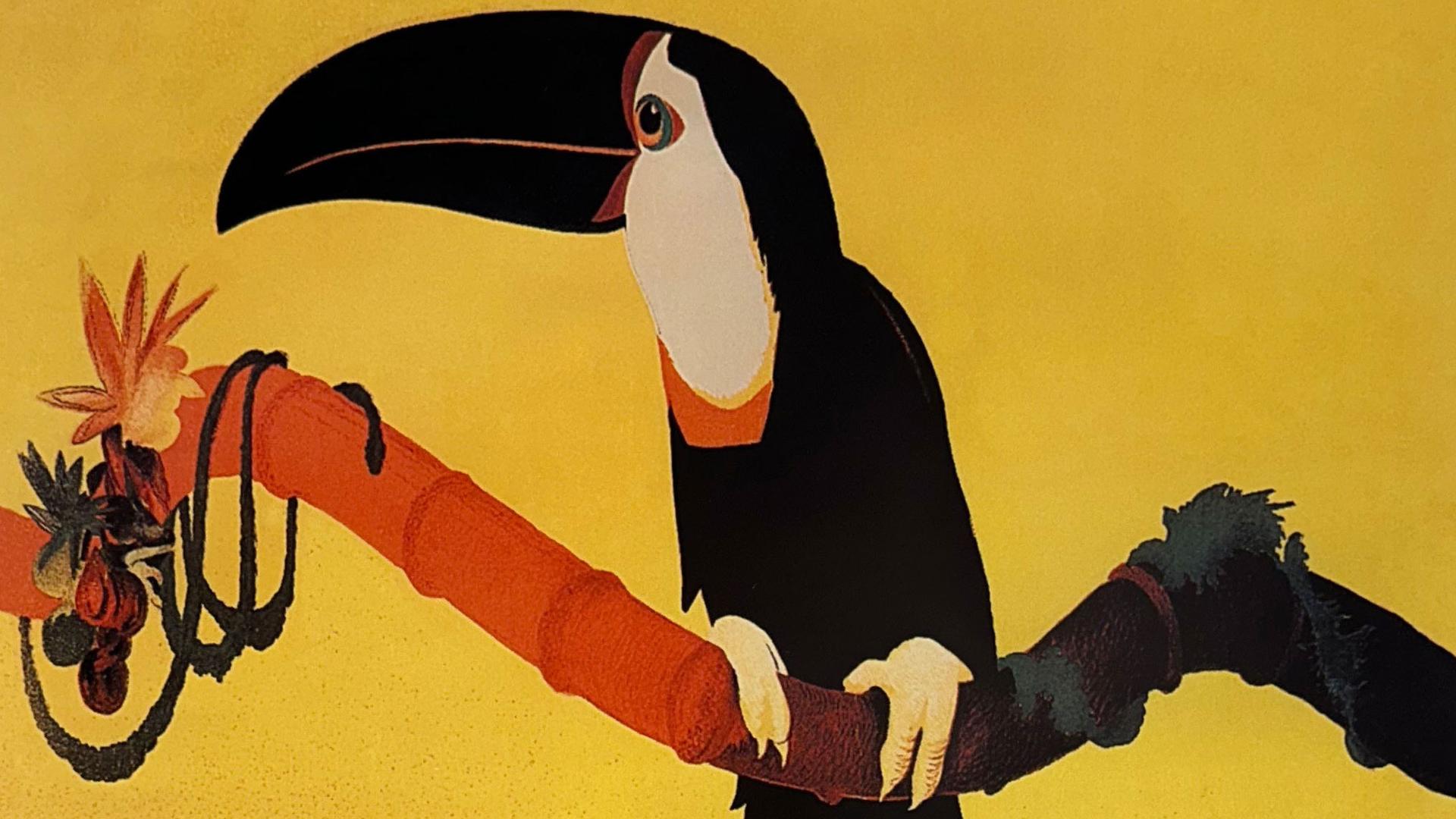‘Imaginary Amazon’ exhibition counters negative stereotypes through contemporary art
The sounds of the Amazon echo through an exhibition called “The Imaginary Amazon,” newly launched at the University Art Gallery on the campus of San Diego State University.
The exhibition features artwork by contemporary artists, many of whom are Indigenous inhabitants of the forest. Their intent is to address some of the stereotypical Western perspectives of the Amazon.
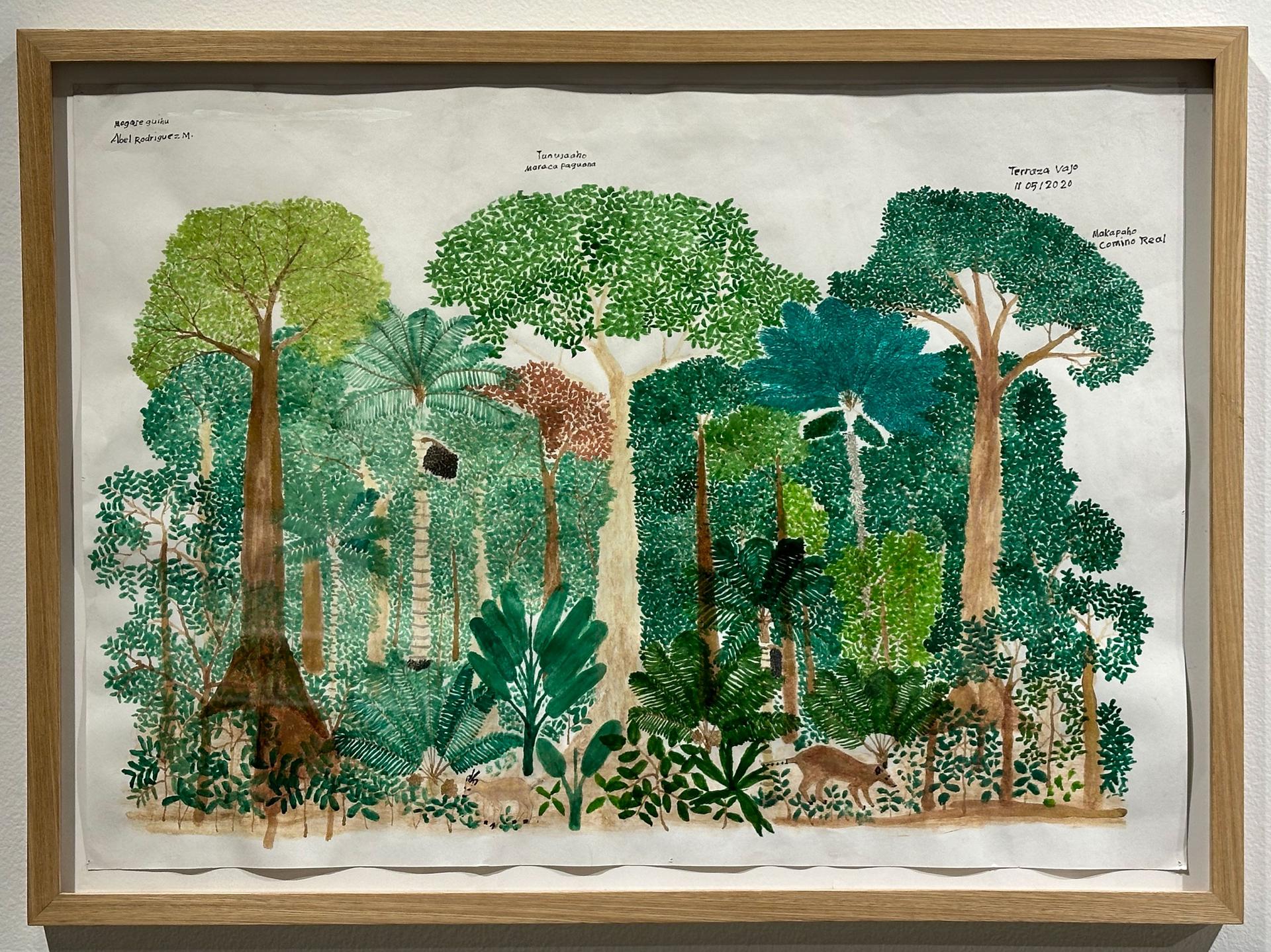
The exhibition reminds viewers of the Amazon’s mass expanse — it’s roughly the size of the United States’ lower 48 states. And it has an equally large hold over many people’s imaginations.
“All different kinds of groups of people have different images of what the Amazon means,” curator Gillian Sneed said, adding that a lot of those images are based on stereotypes and unflattering perspectives trafficked for centures by the so-called Global North.
The exhibition hopes to be a counterweight to those inaccurate portrayals.
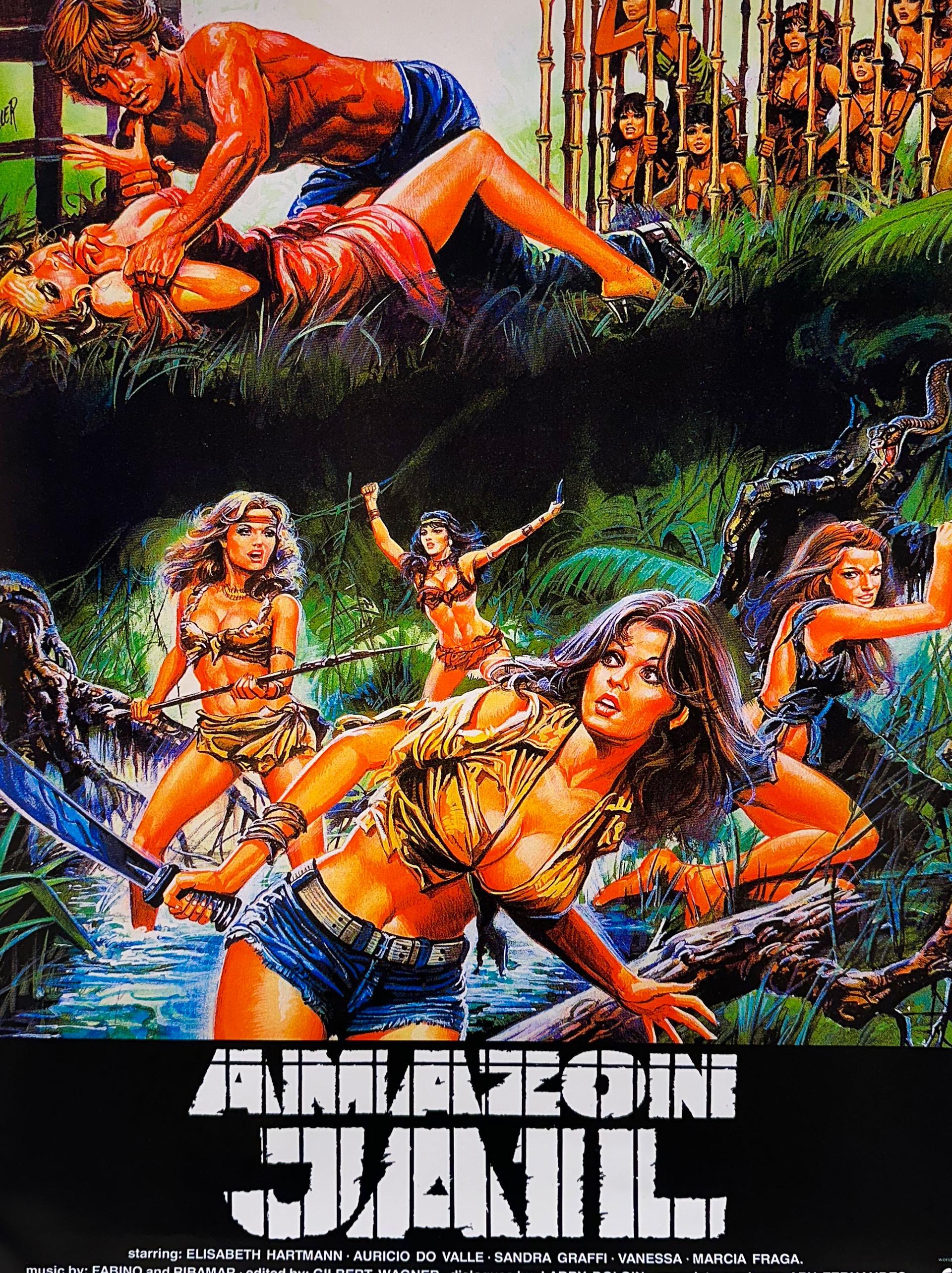
“There are other kinds of imaginaries, the imaginaries of the Indigenous people who live there, their cosmologies of how they see the world or their ritual belief systems.”
“There are other kinds of imaginaries, the imaginaries of the Indigenous people who live there, their cosmologies of how they see the world or their ritual belief systems,” Sneed said.
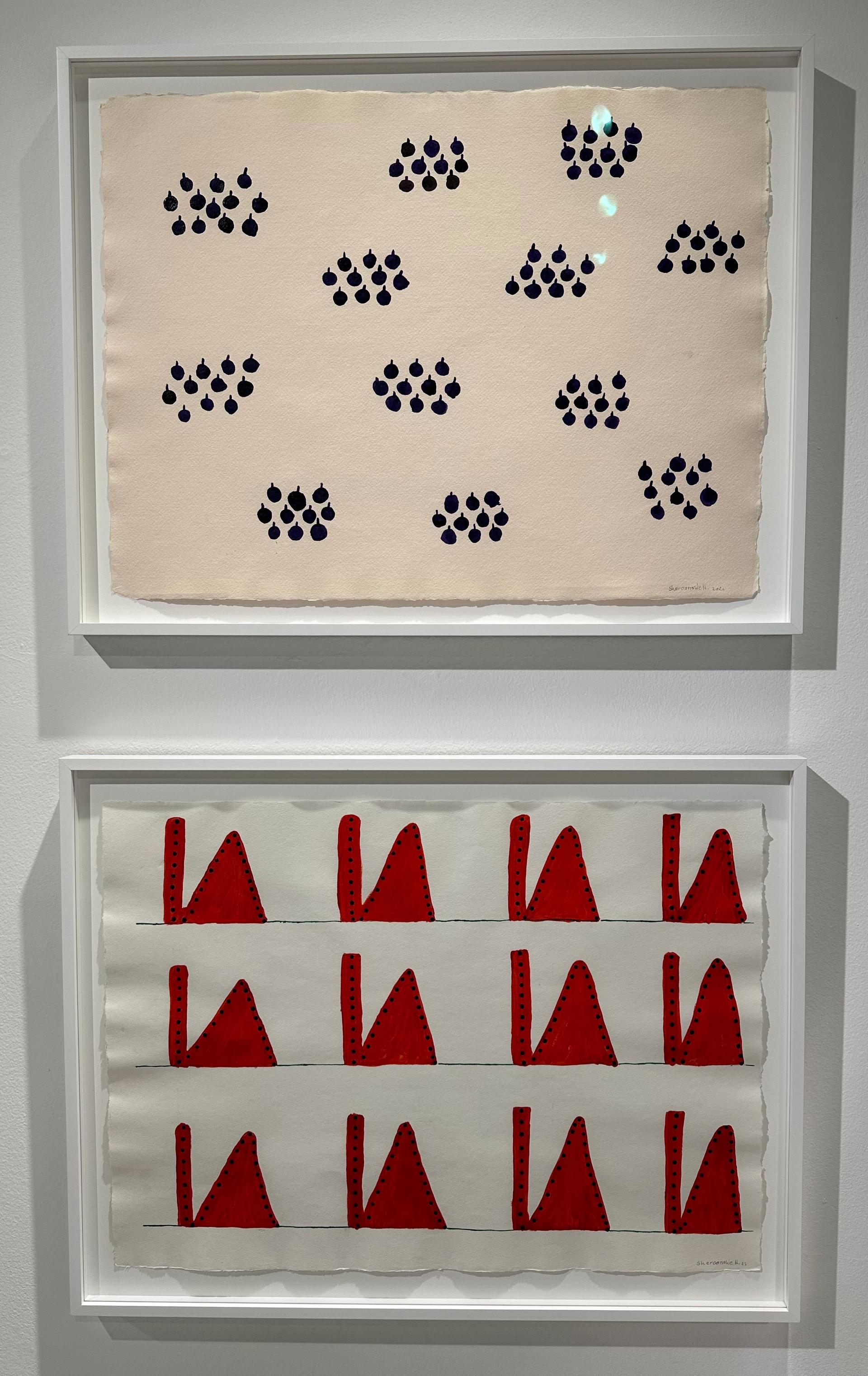
The art exhibit offers social commentary on depictions of the Amazon throughout history.
In 1941, Walt Disney famously traveled to Brazil, where he met an accomplished illustrator named Jota Carlos, who had created a parrot character with human traits. Disney returned to Hollywood and introduced his character, José Carioca, a kind of “man about town” parrot from Brazil.
Brazilian artist Sergio Allevato deals with Disney’s plagiarism through his own portrayal of parrots, painted on earthy linen to stay true to the actual fauna of the Brazilian Amazon, he said.
His portraits are more Audubon than Disney, reversing some of the negative stereotypes that came with the Carioca character, who was portrayed as having a “bad personality,” and was “unfaithful,” Allevato explained.
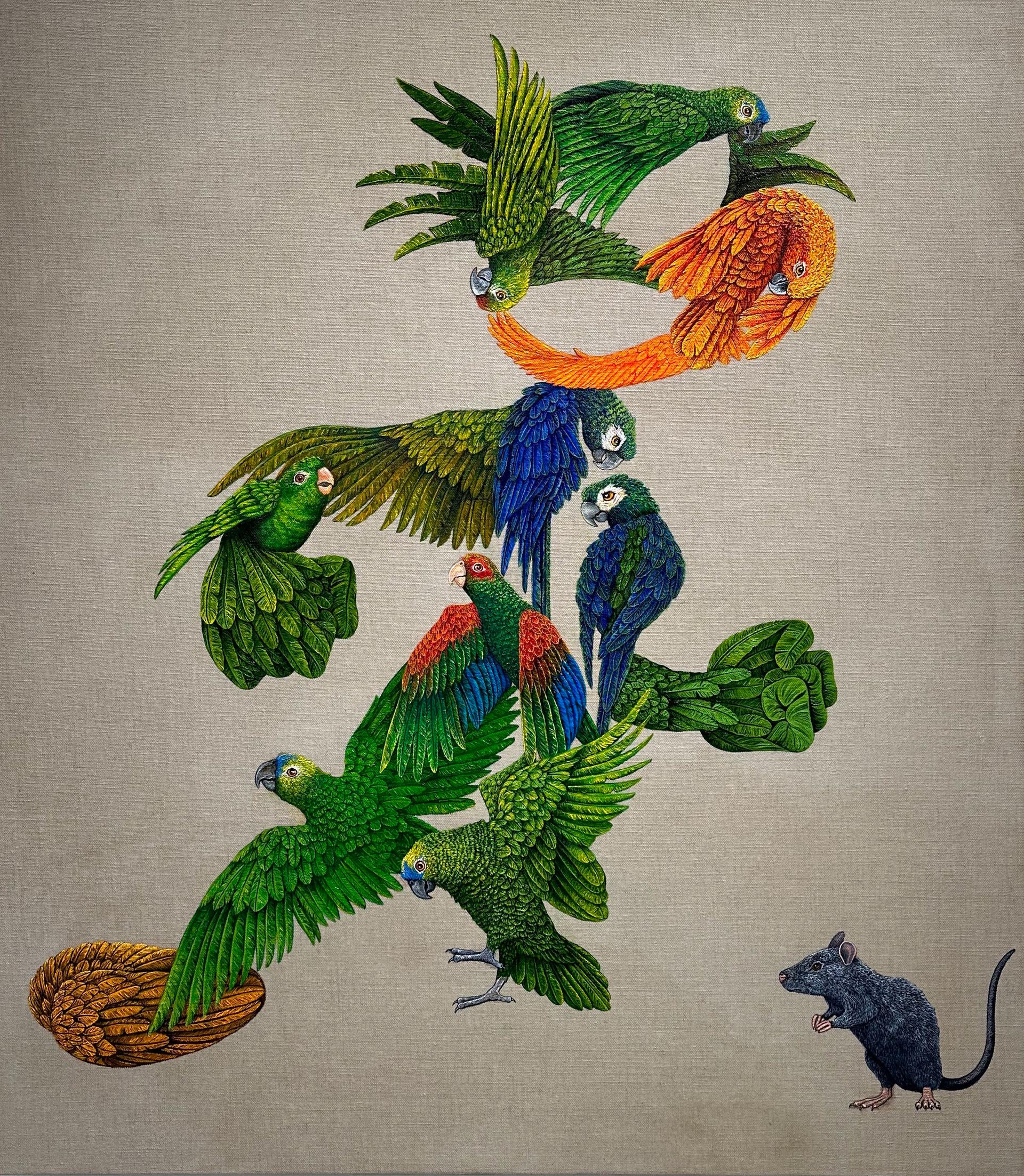
“Parrots are intrinsically connected to Brazilian history.”
“Parrots are intrinsically connected to Brazilian history,” Allevato added. The Portugese called Brazil “the land of the parrots,” or — terra papa gali. Allevato said these parrots were taken by the thousands to Europe, and were exploited.
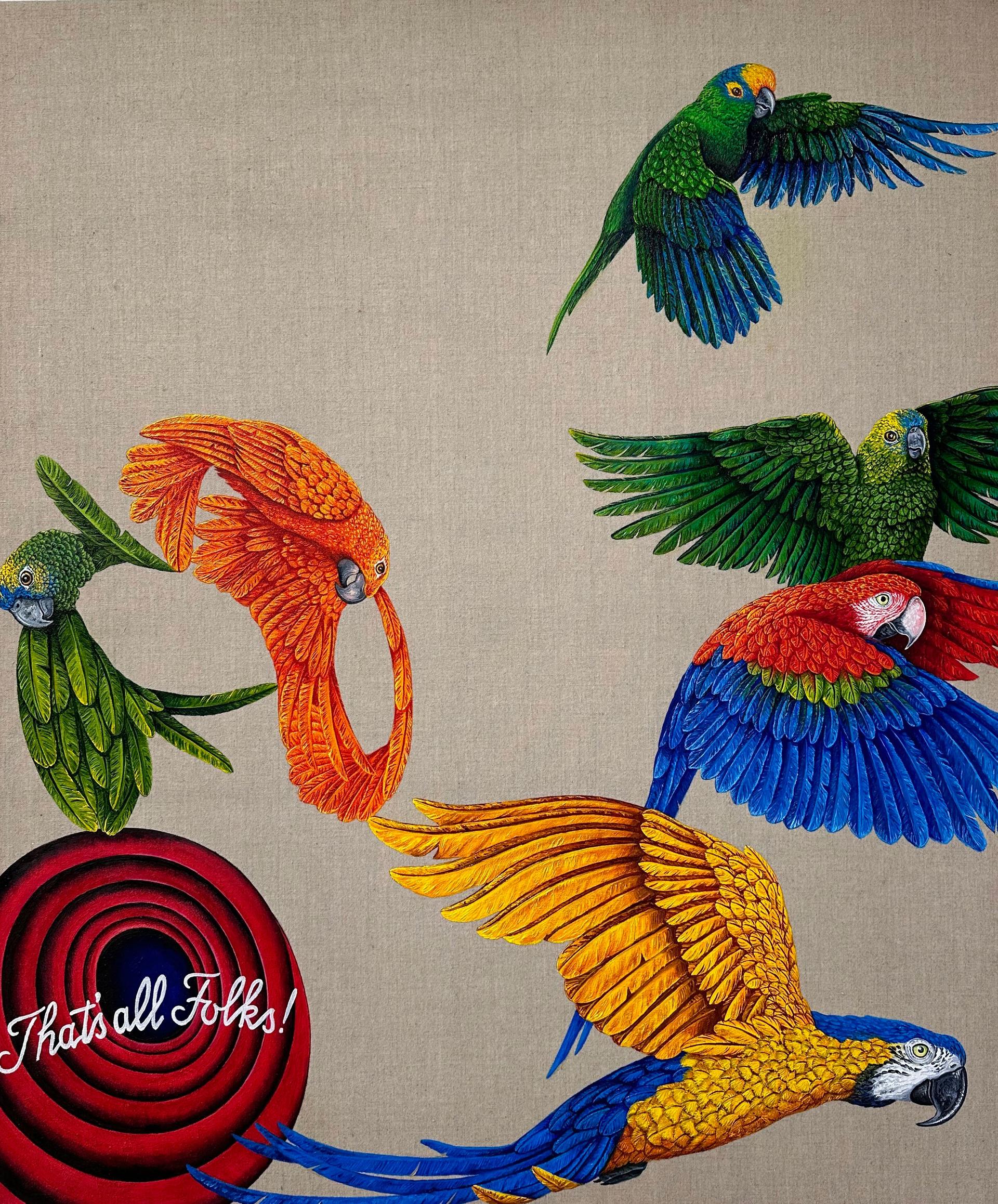
Allevato said he wants to make clear that the “The Imaginary Amazon” show is not just about how people who live in the Amazon see their world. It’s really about the rest of us.
“It’s about being together, everybody together, fighting for the whole planet. That’s it,” he said.
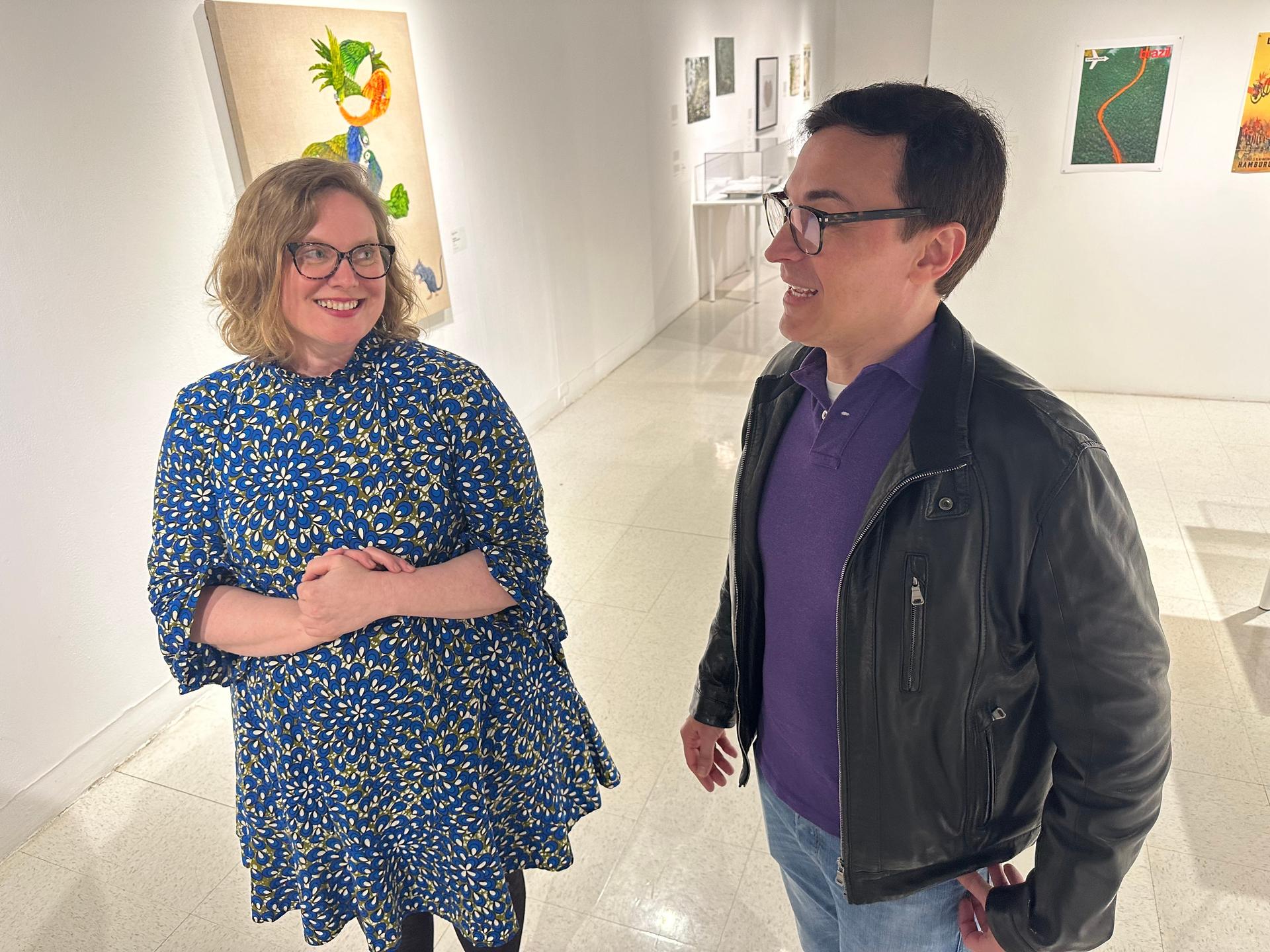
“The Imaginary Amazon” will be on display at San Diego State University’s art gallery until May.
